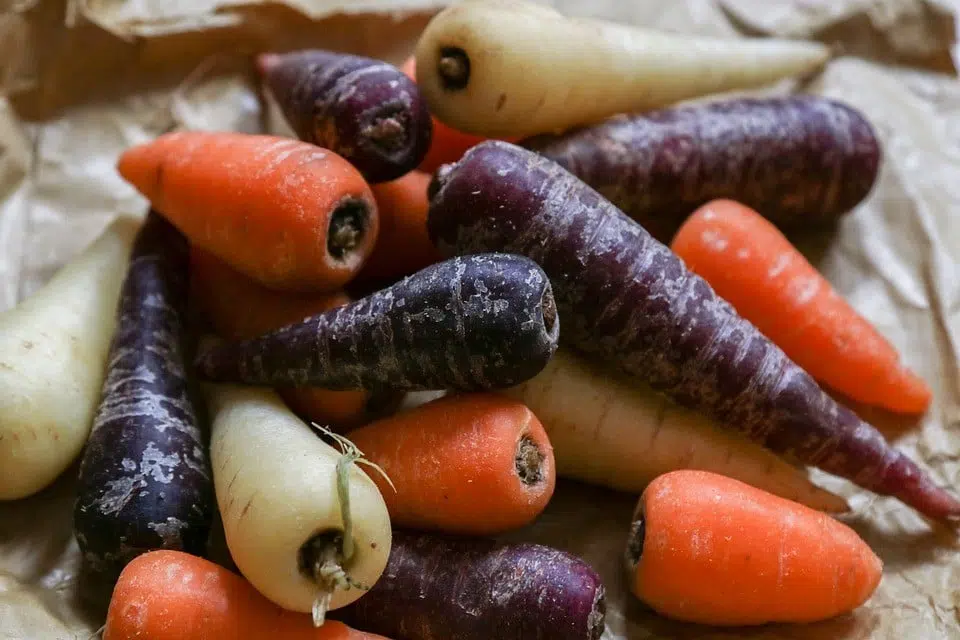You might have come home from the grocery store with something mind-blowing: it was a bag of carrots but in Technicolor. Mixed in with the usual orange sticks were yellow carrots, some the color of potatoes, and others so deeply purple they were almost black. After cooking, you might have discovered a new taste sensation. Purple carrots have been around farmers’ markets for a while now, but more recently, they’ve gone mainstream. While most of us have only ever seen orange carrots, the first cultivated carrots were purple and yellow. Carrots were domesticated in Afghanistan and spread to the eastern Mediterranean about a thousand years ago. They reached Europe and China in the 1300s. By the early 1500s, orange carrots could be found in Italy, Spain, and Germany. But purple, yellow, red, and white varieties persisted in Asia and the Middle East. Nobody’s really sure how the orange carrot came to take over most of the world. Early reports suggested that purple carrots had a better flavor, but purple might have fallen out of favor because they tend to leach a dark pigment onto whatever they’re cooked with. Philipp Simon, a carrot geneticist with the U.S. Department of Agriculture, is partially responsible for bringing the purple carrot back into our lives. One study found that, compared to orange carrots, purple carrots contain twice the amount of alpha and beta carotene, which the body converts into vitamin A. They are now working on making a healthy red carrot……Ed
Source: Sarah Fecht Popular Science /Photo: Free Max Pixel








Comments